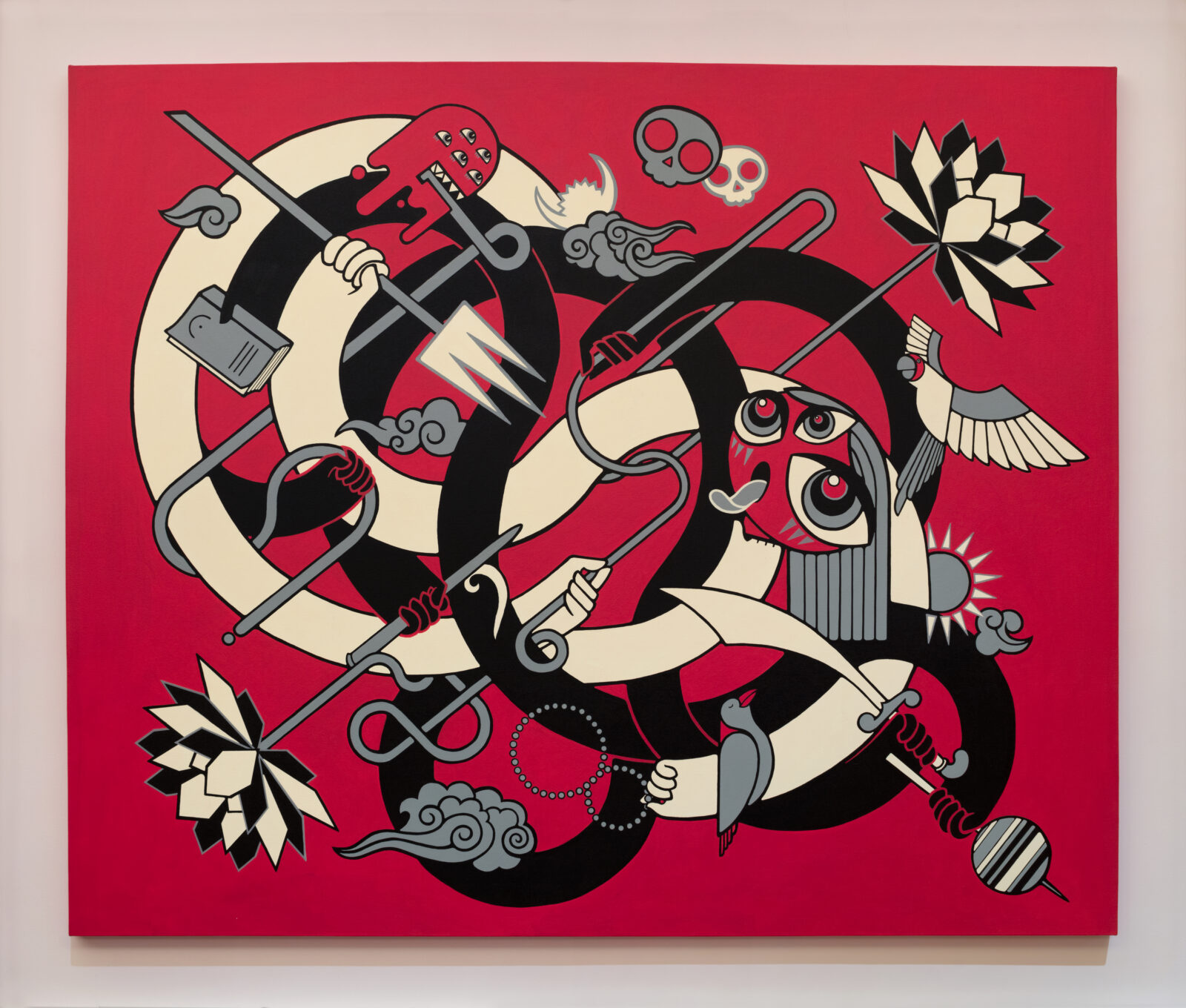
Shraddha Shrestha; Dus Mahavidyas (Great Goddesses of Wisdom): Sangraha; 2023; acrylic on canvas; courtesy of the artist; Photo by Dave De Armas

Shraddha Shrestha; Dus Mahavidyas (Great Goddesses of Wisdom): Sangraha; 2023; acrylic on canvas; courtesy of the artist; Photo by Dave De Armas
I grew up in a traditional Newari household in Patan. Fondly called the artisans’ city, Patan is one of the oldest cities in Nepal and has a rich Hindu and Buddhist cultural heritage. My school bus stop was at the entrance of the Patan Durbar Square, a UNESCO World Heritage Site, and my ancestral home was only a couple minutes’ walk from there.
I used to walk through the most touristic streets filled with medieval pagoda-style temples, old Newari architecture, and of course, commercial art galleries with their standard images of mountain scenery with yaks and cheap copies of thangka and paubha paintings. Chaityas, bahals, and bahis were common sights wherever I went.
My surroundings were filled with rich culture and traditional art practices. But my favorite ritual each day was an hour of afterschool television watching the Cartoon Network. I loved shows like The Powerpuff Girls and Dexter’s Laboratory. These animations were a colorful escape from the old city and its traditional lifestyle.
Growing up in a conservative, patriarchal Newari household meant staying within a lot of cultural, social, and gender boundaries. All the girls and women in my family were used to catcalling, unwanted stares from the neighbors, being scolded by male family members for dressing with our knees showing, getting judged for walking with a male friend, and being shouted at for reaching home after dark.
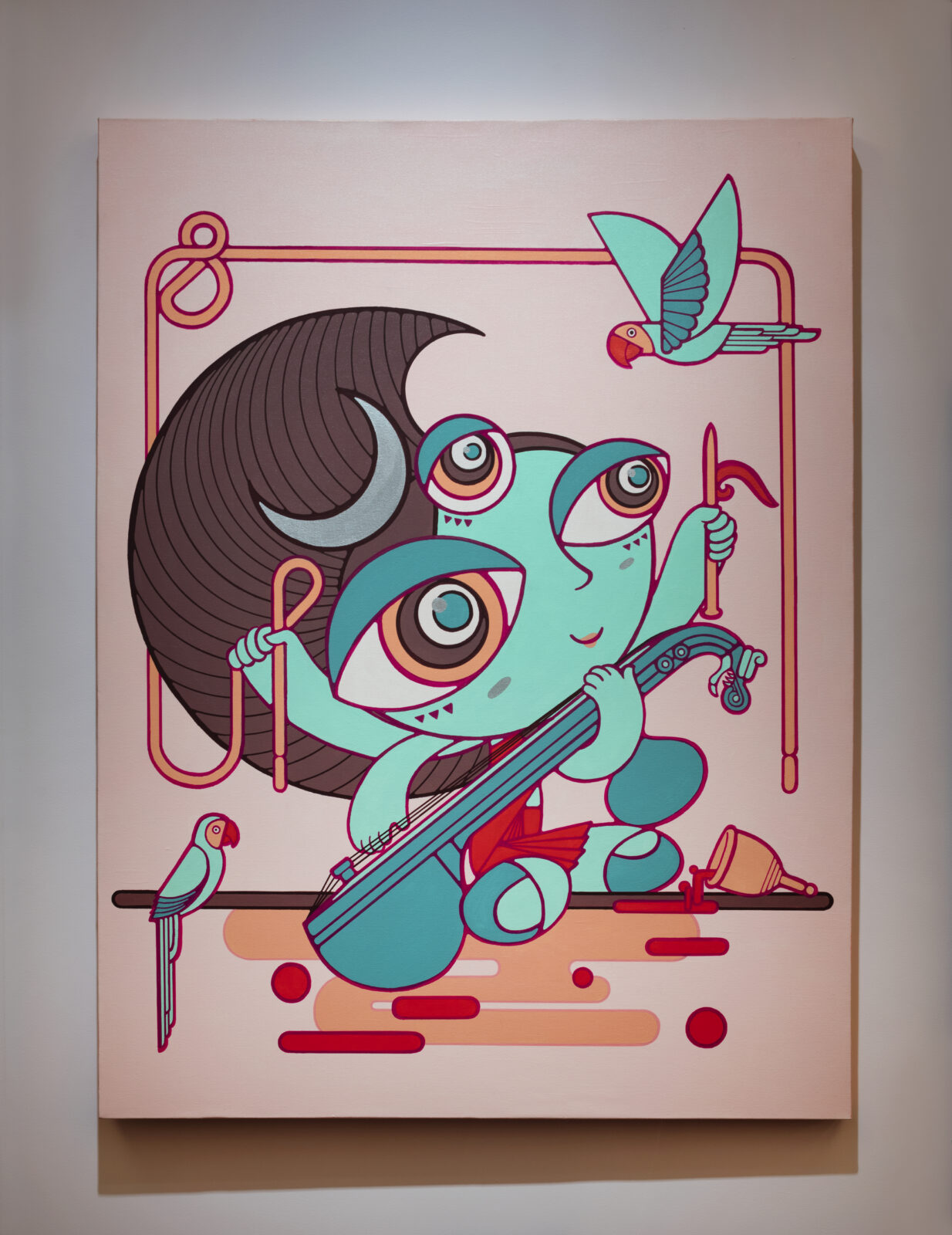
Shraddha Shrestha; Dus Mahavidyas (Great Goddesses of Wisdom): Matangi; 2023; acrylic on canvas; courtesy of the artist; Photo by Dave De Armas
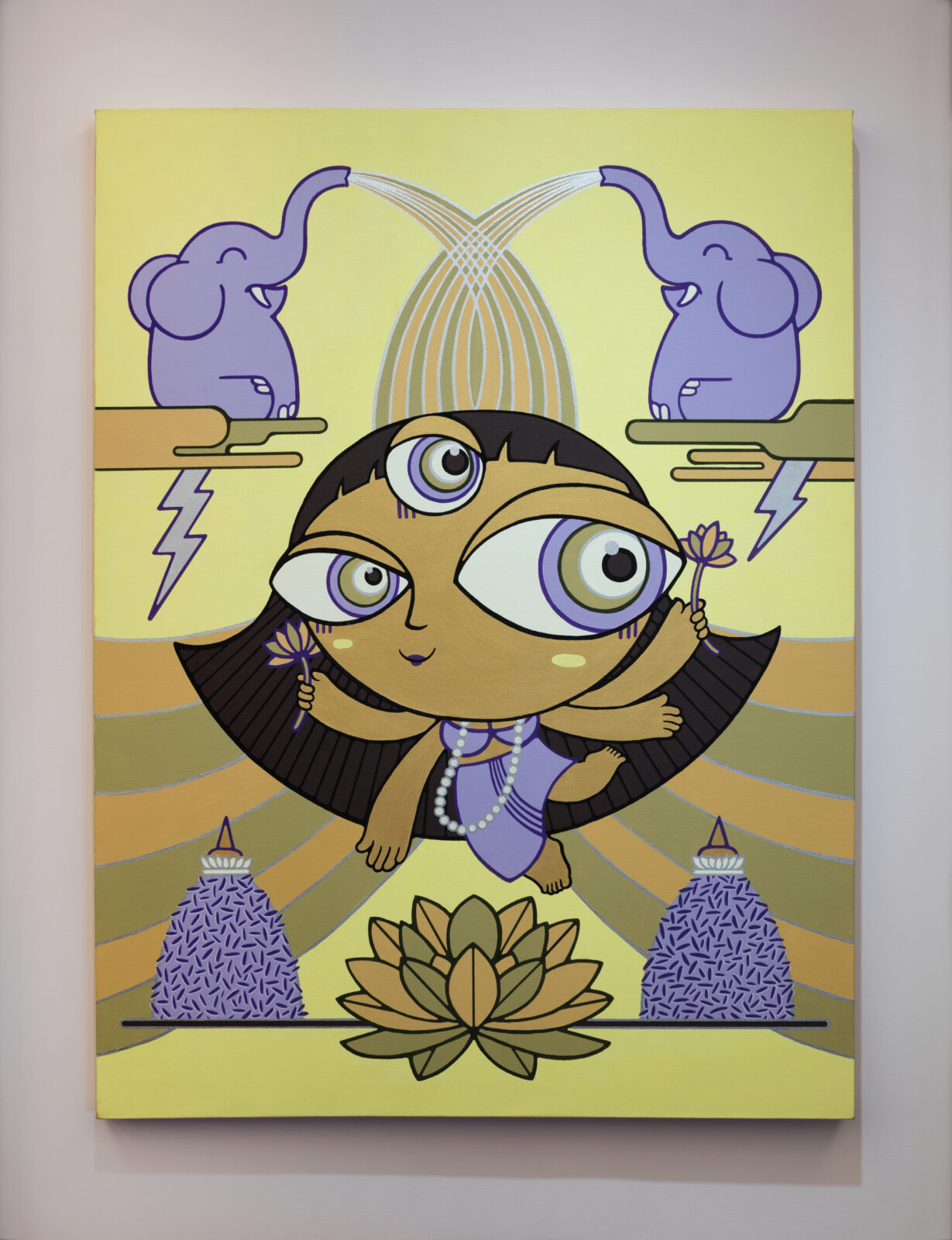
Shraddha Shrestha; Dus Mahavidyas (Great Goddesses of Wisdom): Kamala; 2023; acrylic on canvas; courtesy of the artist; Photo by Dave De Armas
I started imagining a space where my two worlds—the traditional and the cartoons—collide. This imaginary place features a simplified version of the Hindu and Buddhist iconography. In this world, the gods and goddesses are from different planets, and they are aliens to us humans, as they are beyond our understanding. They are playful and childlike, and they are here for us irrespective of gender, caste, and social differences.
My family and the society we belong to are proud of our rich heritage. Most of the households here have a worship room with idols of Hindu gods and goddesses like Ganesh, Shiva, Parvati, and Saraswati. When we worship the divine power, we worship with equal belief and faith, regardless of the gender of the deity. Then why are women treated differently within our own society? Why are we looked down on and oppressed?
Womanhood should be celebrated. Instead we need to fight for basic things like education, work, health, and more. Doesn’t it contradict the tradition we believe in? Doesn’t it disrespect the deities we worship? We pray to the lingam, which is a representation of the union between the masculine and the feminine, yet we cannot talk about sexuality openly. In the world I imagine and represent in my art, equal female participation is acknowledged and honored, as ultimate creation is only possible with both genders.
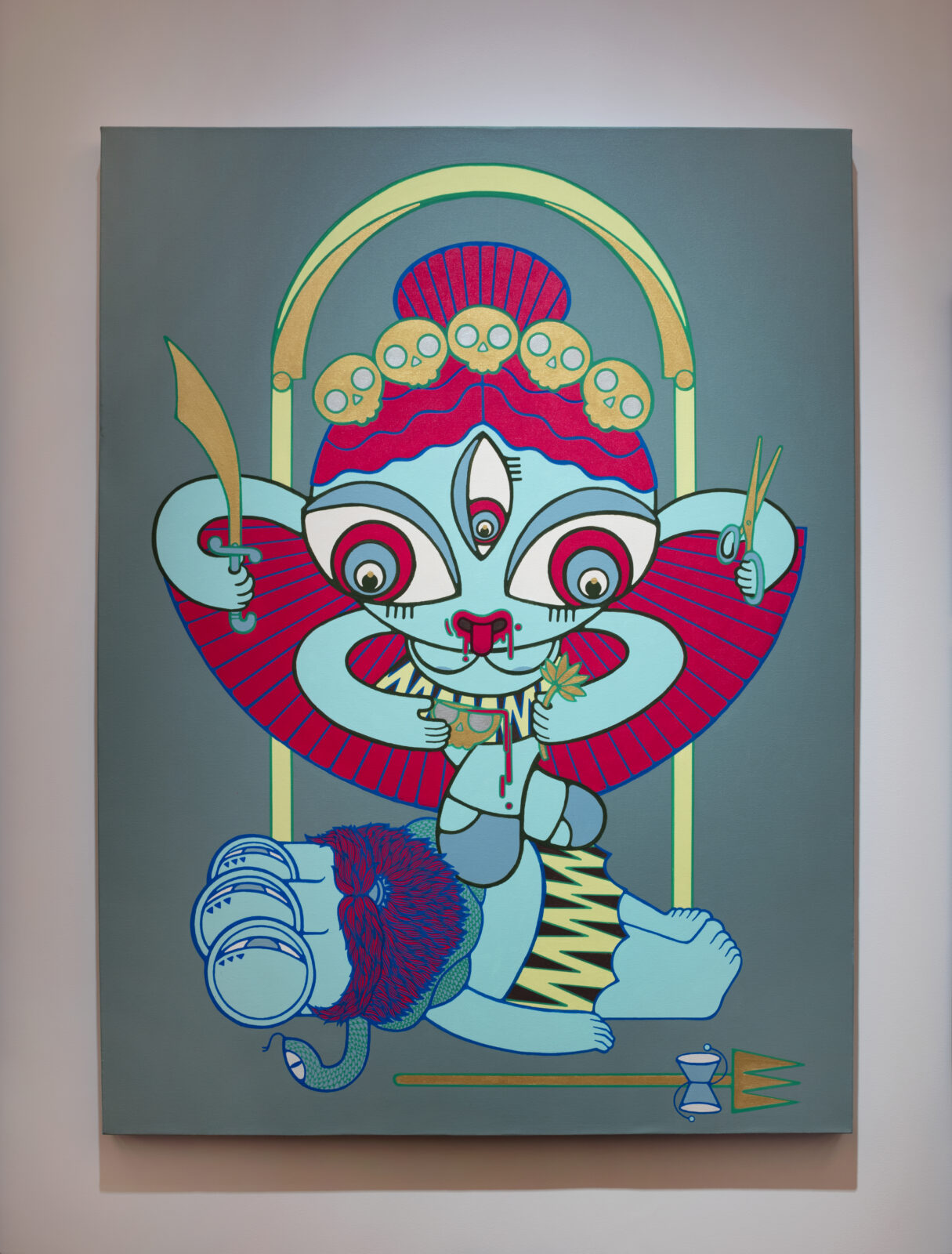
Shraddha Shrestha; Dus Mahavidyas (Great Goddesses of Wisdom): Tara; 2023; acrylic on canvas; courtesy of the artist; Photo by Dave De Armas
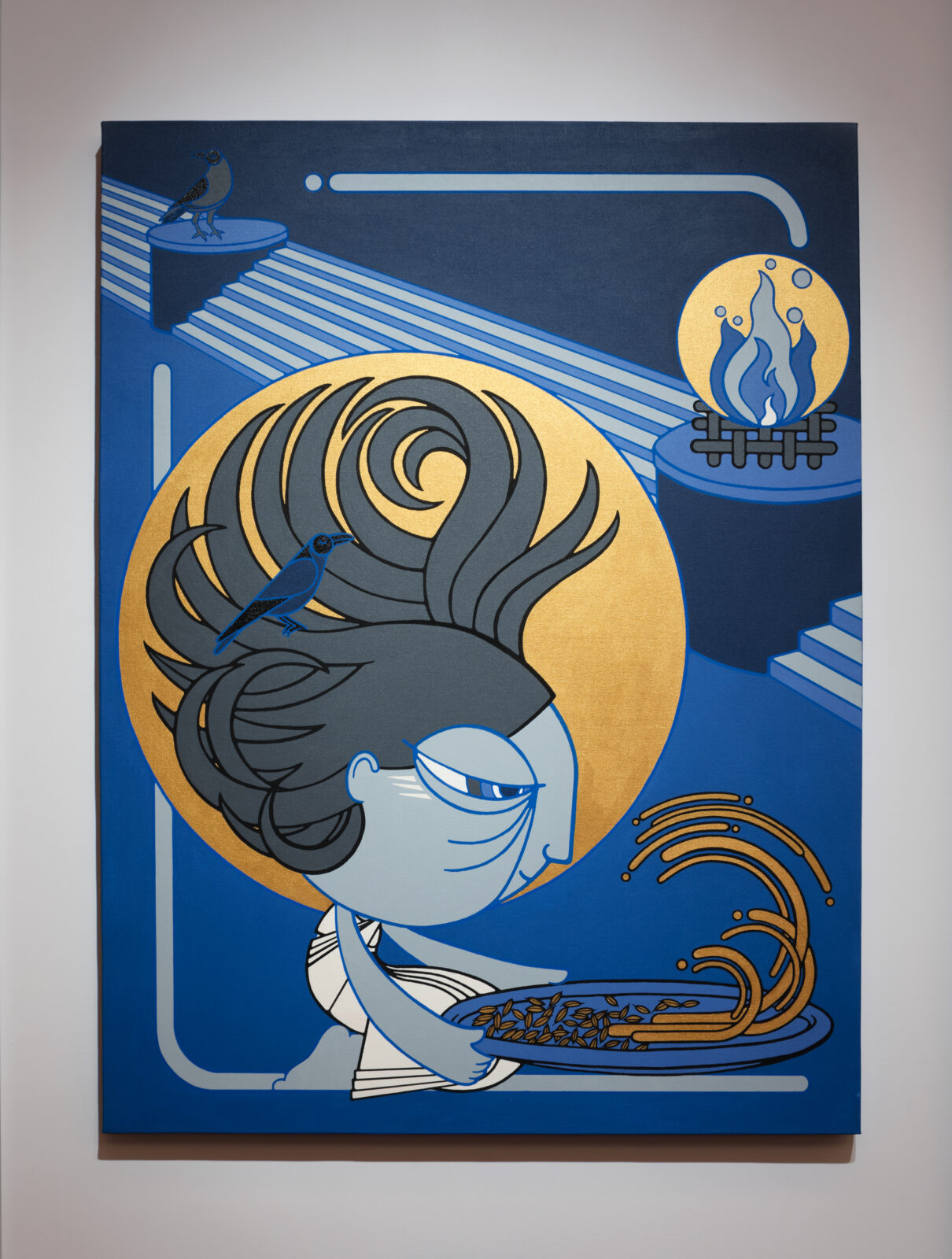
Shraddha Shrestha; Dus Mahavidyas (Great Goddesses of Wisdom): Dhumavati; 2023; acrylic on canvas; courtesy of the artist; Photo by Dave De Armas
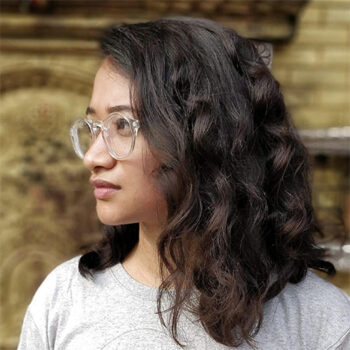
Shraddha Shrestha is an independent muralist, illustrator, and visual artist based in Kathmandu. She has a master’s degree in design in illustration from the Glasgow School of Art. She has been active in the street art scene in Kathmandu since 2011. Shraddha Shrestha is currently part of an illustrators collective called Virangana Comicsm and has recently published the first all-women comics anthology in Nepal. Growing up in the aesthetically rich city of Patan has played a big part in her journey as an artist. Much of her art is about fantastical characters which are a reflection of her childhood days and the traditional surroundings.
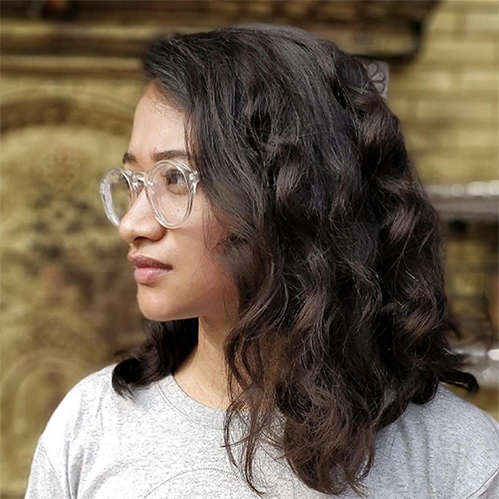

Rubin Museum
150 W. 17th St., NYC
Get the latest news and stories from the Rubin, plus occasional information on how to support our work.